
Paul Gauguin Painting Reproductions 3 of 8
1848-1903
French Post-Impressionist Painter
183 Gauguin Paintings
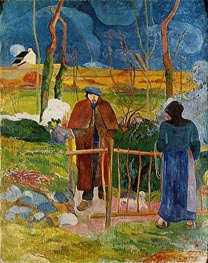
Bonjour Monsieur Gauguin 1889
Oil Painting
$898
$898
Canvas Print
$73.85
$73.85
SKU: GAP-3038
Paul Gauguin
Original Size: 92.5 x 74 cm
National Gallery, Prague, Czech Republic
Paul Gauguin
Original Size: 92.5 x 74 cm
National Gallery, Prague, Czech Republic
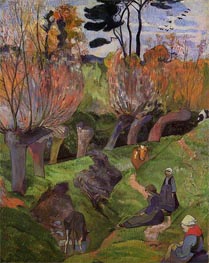
The Willows 1889
Oil Painting
$898
$898
Canvas Print
$74.53
$74.53
SKU: GAP-3039
Paul Gauguin
Original Size: 92 x 74.5 cm
Nasjonalgalleriet, Oslo, Norway
Paul Gauguin
Original Size: 92 x 74.5 cm
Nasjonalgalleriet, Oslo, Norway

Little Girls (Landscape with Two Breton Girls) 1889
Oil Painting
$898
$898
SKU: GAP-3040
Paul Gauguin
Original Size: unknown
Musee d'Orsay, Paris, France
Paul Gauguin
Original Size: unknown
Musee d'Orsay, Paris, France

Haystack, near Arles 1888
Oil Painting
$693
$693
Canvas Print
$73.68
$73.68
SKU: GAP-3041
Paul Gauguin
Original Size: 91.4 x 72.4 cm
Indianapolis Museum of Art, Indiana, USA
Paul Gauguin
Original Size: 91.4 x 72.4 cm
Indianapolis Museum of Art, Indiana, USA
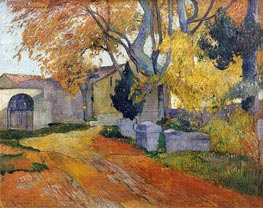
Lane at Alchamps, Arles 1888
Oil Painting
$686
$686
Canvas Print
$74.02
$74.02
SKU: GAP-3042
Paul Gauguin
Original Size: unknown
Private Collection
Paul Gauguin
Original Size: unknown
Private Collection

Night Cafe at Arles 1888
Oil Painting
$922
$922
Canvas Print
$73.17
$73.17
SKU: GAP-3043
Paul Gauguin
Original Size: 72 x 92 cm
Pushkin Museum of Fine Arts, Moscow, Russia
Paul Gauguin
Original Size: 72 x 92 cm
Pushkin Museum of Fine Arts, Moscow, Russia
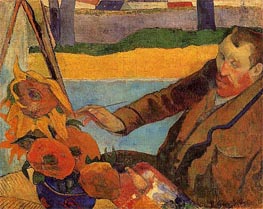
Portrait of Vincent van Gogh Painting Sunflowers 1888
Oil Painting
$911
$911
Canvas Print
$74.53
$74.53
SKU: GAP-3044
Paul Gauguin
Original Size: 73 x 91 cm
Van Gogh Museum, Amsterdam, Netherlands
Paul Gauguin
Original Size: 73 x 91 cm
Van Gogh Museum, Amsterdam, Netherlands
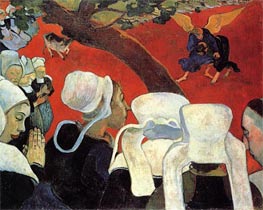
The Vision after the Sermon 1888
Oil Painting
$669
$669
Canvas Print
$72.32
$72.32
SKU: GAP-3045
Paul Gauguin
Original Size: 73 x 92.7 cm
National Galleries of Scotland, Edinburgh, UK
Paul Gauguin
Original Size: 73 x 92.7 cm
National Galleries of Scotland, Edinburgh, UK

Ia Orana Maria (Hail Mary) 1891
Oil Painting
$898
$898
Canvas Print
$72.49
$72.49
SKU: GAP-8195
Paul Gauguin
Original Size: 113.7 x 87.6 cm
Metropolitan Museum of Art, New York, USA
Paul Gauguin
Original Size: 113.7 x 87.6 cm
Metropolitan Museum of Art, New York, USA
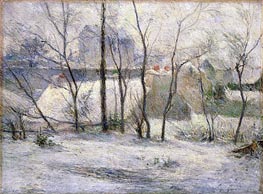
Winter Landscape 1879
Oil Painting
$827
$827
Canvas Print
$61.75
$61.75
SKU: GAP-12819
Paul Gauguin
Original Size: 60.5 x 80.5 cm
Museum of Fine Arts, Budapest, Hungary
Paul Gauguin
Original Size: 60.5 x 80.5 cm
Museum of Fine Arts, Budapest, Hungary
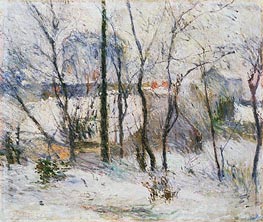
Garden under Snow 1879
Oil Painting
$729
$729
Canvas Print
$68.01
$68.01
SKU: GAP-12820
Paul Gauguin
Original Size: unknown
Private Collection
Paul Gauguin
Original Size: unknown
Private Collection

Life and Death 1889
Oil Painting
$880
$880
Canvas Print
$74.02
$74.02
SKU: GAP-12984
Paul Gauguin
Original Size: 92 x 75 cm
Private Collection
Paul Gauguin
Original Size: 92 x 75 cm
Private Collection
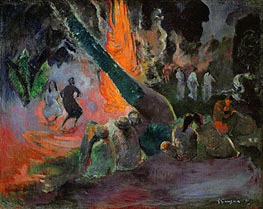
Upaupa 1891
Oil Painting
$825
$825
Canvas Print
$74.19
$74.19
SKU: GAP-12985
Paul Gauguin
Original Size: 73 x 92 cm
The Israel Museum, Jerusalem, Israel
Paul Gauguin
Original Size: 73 x 92 cm
The Israel Museum, Jerusalem, Israel
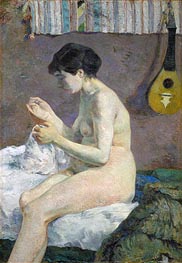
Nude 1880
Oil Painting
$823
$823
Canvas Print
$64.67
$64.67
SKU: GAP-12986
Paul Gauguin
Original Size: 111.4 x 79.5 cm
New Carlsberg Glyptotek, Copenhagen, Denmark
Paul Gauguin
Original Size: 111.4 x 79.5 cm
New Carlsberg Glyptotek, Copenhagen, Denmark
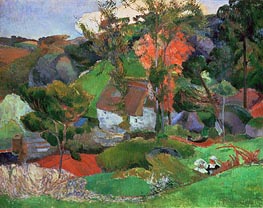
Landscape at Pont Aven 1888
Oil Painting
$852
$852
Canvas Print
$74.19
$74.19
SKU: GAP-12987
Paul Gauguin
Original Size: 72 x 91 cm
Private Collection
Paul Gauguin
Original Size: 72 x 91 cm
Private Collection

Boys from Britanny Bathing (Bath next to the mill ... 1886
Oil Painting
$814
$814
Canvas Print
$74.53
$74.53
SKU: GAP-12988
Paul Gauguin
Original Size: 60 x 73 cm
Museum of Art, Hiroshima, Japan
Paul Gauguin
Original Size: 60 x 73 cm
Museum of Art, Hiroshima, Japan
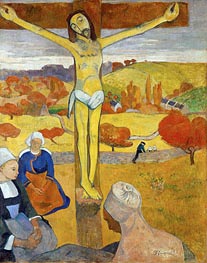
Yellow Christ 1889
Oil Painting
$838
$838
Canvas Print
$73.68
$73.68
SKU: GAP-12989
Paul Gauguin
Original Size: 92 x 73 cm
Albright-Knox Art Gallery, Buffalo, USA
Paul Gauguin
Original Size: 92 x 73 cm
Albright-Knox Art Gallery, Buffalo, USA

Women of Brittany and Calf 1888
Oil Painting
$811
$811
Canvas Print
$73.00
$73.00
SKU: GAP-12990
Paul Gauguin
Original Size: 91.1 x 72 cm
New Carlsberg Glyptotek, Copenhagen, Denmark
Paul Gauguin
Original Size: 91.1 x 72 cm
New Carlsberg Glyptotek, Copenhagen, Denmark
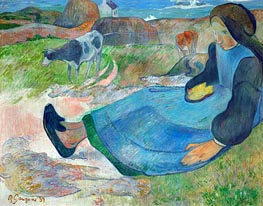
The Cowherd (Young Woman from Brittany) 1889
Oil Painting
$803
$803
Canvas Print
$73.51
$73.51
SKU: GAP-12991
Paul Gauguin
Original Size: 71.5 x 90.5 cm
New Carlsberg Glyptotek, Copenhagen, Denmark
Paul Gauguin
Original Size: 71.5 x 90.5 cm
New Carlsberg Glyptotek, Copenhagen, Denmark
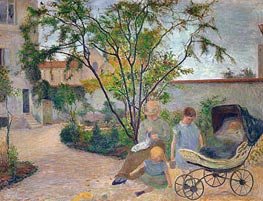
Garden in Vaugirard (The Artist's Family in the ... 1881
Oil Painting
$868
$868
Canvas Print
$71.46
$71.46
SKU: GAP-12992
Paul Gauguin
Original Size: 87 x 114 cm
New Carlsberg Glyptotek, Copenhagen, Denmark
Paul Gauguin
Original Size: 87 x 114 cm
New Carlsberg Glyptotek, Copenhagen, Denmark
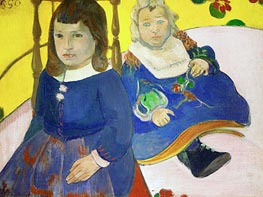
Two Children 1889
Oil Painting
$780
$780
Canvas Print
$87.06
$87.06
SKU: GAP-12993
Paul Gauguin
Original Size: 46.9 x 60 cm
New Carlsberg Glyptotek, Copenhagen, Denmark
Paul Gauguin
Original Size: 46.9 x 60 cm
New Carlsberg Glyptotek, Copenhagen, Denmark
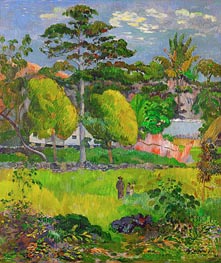
Landscape 1901
Oil Painting
$795
$795
Canvas Print
$78.61
$78.61
SKU: GAP-12994
Paul Gauguin
Original Size: 76 x 65 cm
Musee de l'Orangerie, Paris, France
Paul Gauguin
Original Size: 76 x 65 cm
Musee de l'Orangerie, Paris, France
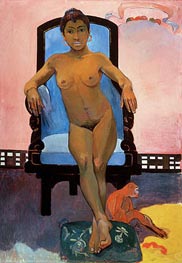
Annah the Javanese (Aita tamari vahine Judith te ... c.1893/94
Oil Painting
$874
$874
Canvas Print
$64.67
$64.67
SKU: GAP-12995
Paul Gauguin
Original Size: 116 x 81 cm
Private Collection
Paul Gauguin
Original Size: 116 x 81 cm
Private Collection
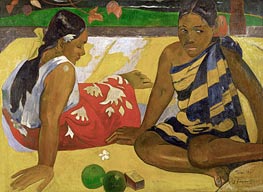
Parau Api (What's New) 1892
Oil Painting
$887
$887
Canvas Print
$68.24
$68.24
SKU: GAP-12996
Paul Gauguin
Original Size: 67 x 92 cm
Galerie Neue Meister, Dresden, Germany
Paul Gauguin
Original Size: 67 x 92 cm
Galerie Neue Meister, Dresden, Germany